

Tokyo Tower (東京タワー, Tōkyō tawā) is the tallest self-supporting steel structure in the world, this orange-red radio tower (modelled on Paris’ Eiffel) defined the skyline of Tokyo for many years, and even though its broadcasting duties have been supplanted by the Tokyo Skytree, it will likely continue to be dear to residents and visitors for years to come.
Recently, a Showa-era nostalgia boom has come about in Japan, primarily for the 1950s, 60s and 70s eras, and the Tower was built during those post-wartime years, in Showa 33 (1958). You may have seen it under construction in the popular 2005 film Always Sanchoume no Yuuhi or giving a sense of place to dozens of other films set in the capital. You can also view a history in photos of the Tower on your way down from its observation decks.
The Main Observatory at the 145 metre mark is Tokyo Tower’s biggest draw. Offering a 360-degree view of the city, the Observatory features large glass windows and a few small glass panels in the floor, a cafe, gift shop, the Club33 stage for live shows, computer stations to take you through time-lapses and city maps, and markings on the walls to help direct you to major sights. On a very clear day, it’s even possible to see Mount Fuji from here.
The Special Observatory is a step up in quality, reflected by the extra admission price. Located at 250 metres above ground, it is a circular deck with a much smaller amount of foot traffic and breathtaking views.
Unfortunately, there aren’t as many features on the upper part of the tower as one might hope for the ticket price – especially given that there is often a long lineup for admission. In the building below the tower, however, known as FootTown, there is plenty more to do. On the first floor, where the Observatory elevators are located, you can also find an enormous aquarium, official "Tower Restaurant," a FamilyMart convenience store and souvenir shop. The second floor is a bazaar-like shopping area with plenty of tourist merchandise and gift stands, five restaurants and a food court with fast food. The third floor’s main attractions are the Guinness World Records Museum Tokyo and the Tokyo Tower Wax Museum, both popular among visitors. The Wax Museum has been severely showing its age in recent years, but is still a delight to see. A hologram gallery, cafe and a few other shops can also be found on the third floor. The top floor is mostly occupied by Nippon Square, and also features a small game arcade. The attractions change occasionally, as Tokyo Tower is constantly seeking ways to bring in more visitors.
There’s something irreplaceably iconic about visiting Tokyo Tower itself – if you take a visit to Japan and skip the Tower in favour of the view from the Mori Building or one of the other skyscrapers, you may later regret it!
The closest station is Onarimon Station on the Mita Subway Line.
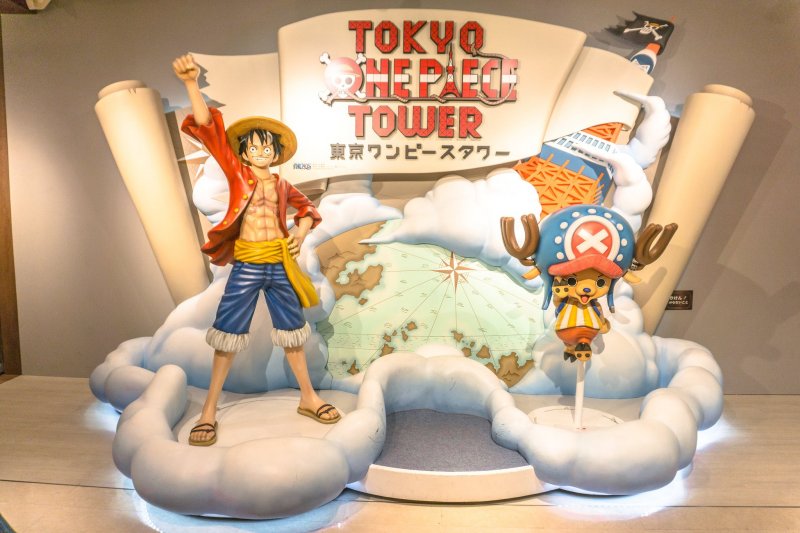
With over ten attractions and shops, this indoor theme park is sure to make fans of the popular Shonen Jump series smile along with Captain Luffy D. Monkey. Opened in 2015, Tokyo One Piece Tower of...
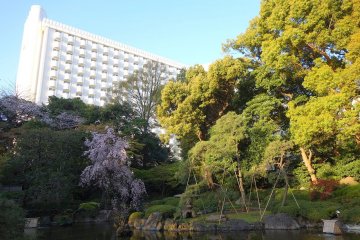
Just minutes from Shinagawa Station, the Grand Prince Hotel New Takanawa is surrounded by lush greenery in the Takanawa area, with rooms offering balcony views of the nearby gardens and the surrounding Tokyo cityscape. This urban resort features convention facilities like the Hiten banquet hall, the international Convention Center Pamir, as well as a wide variety of Japanese, Chinese and Western restaurants.
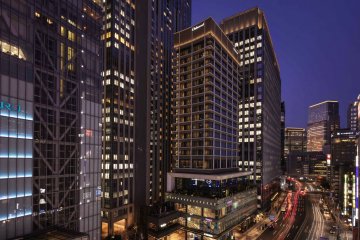
Oakwood Premier Tokyo comes from a brand of standout luxury hotel & service apartments right at the heart of the Tokyo metropolis. It is located in the business hub of Marunouchi with JR Tokyo Station in close proximity. This will allow guests and travelers to easily access the city's extensive transport network and visit various landmarks such as Imperial Palace, Tsukiji Fish Market, Ginza and Shopping District. Boasting 123 luxurious apartments on the upper floors of a multi-serviced complex, each room offers a magnificent view of the city, not to mention all furnished and a fully-equipped kitchen set which is rarely seen in your everyday service apartment. Without doubt, these spacious tranquil retreats are curated to give you the amenities and services of a luxury hotel and a feeling of home. They are good options for both business executives and leisure travelers from one night of a short-stay to a few weeks/months of mid-to-long-term stay.

ANA Holiday Inn Tokyo Bay (previously Dai-ichi Hotel Tokyo Seafort) is a 132-room hotel that will provide visitors to Japan’s capital city with an attractive, fresh option in the midscale space. ANA Holiday Inn Tokyo Bay will join a strong portfolio of 10 ANA Holiday Inn open and pipeline hotels across Japan, and become part of the brand’s global footprint of 1,234 open hotels and 278 pipeline properties.

If you're a fan of Quentin Tarantino’s Kill Bill, there's one Tokyo restaurant that absolutely deserves a spot on your bucket list. While you may not know it by its real name, chances are you've seen it on screen—it’s the unforgettable setting for the iconic, over-the-top showdown between The Bride and the Crazy 88. Known affectionately by fans as “The Kill Bill Restaurant,” this venue offers more than just cinematic nostalgia—it's a vibrant and unique dining experience in its own right. Located in Tokyo’s upscale Nishi-Azabu district, this classic-style izakaya bar is where fiction meets flavor. Though the fake blood and samurai swords have long been cleaned away, the spirit of the film lives on in the architecture and atmosphere. Stepping inside feels like walking onto the set: a grand, high-ceilinged hall with a central open-plan dining space, surrounded by a mezzanine-level balcony—instantly recognizable to anyone who’s watched the movie. But don’t mistake it for just a movie-themed attraction. The Kill Bill restaurant is a serious culinary destination. It offers a wide variety of traditional Japanese dishes, from sashimi and grilled skewers to noodle dishes and seasonal specialties. The menu also boasts creative fusion items like avocado and camembert tempura, which nods to the restaurant’s global popularity and mindset. And for international travelers with specific dietary needs, the restaurant provides vegan and halal-friendly menus (with at least three days’ notice). What makes this spot truly special is its ability to deliver a top-tier gourmet experience while doubling as a pop culture pilgrimage. You can sip sake where Uma Thurman once sliced through waves of enemies—minus the chaos, of course. Whether you’re a die-hard Tarantino fan, a foodie on the hunt for authentic Japanese flavors, or simply someone looking for a unique night out in Tokyo, this restaurant checks every box. Just one tip: Enjoy the drinks and dishes, but leave the swordplay to the professionals. Note: As you’d expect, Gonpachi is a popular restaurant. Same-day reservations are possible, but ideally you’ll want to reserve your table at least two days ahead of your visit, and even earlier if you’re planning to visit at the weekend.

B-Flat Commune is an open-air hangout in Omotesandō featuring a variety of stalls and food trucks offering unique drinks, clothing, and bites to eat. Its relaxed vibe and plenty of seating make it an ideal spot for casual meetups and spending time with friends. It's a creative place where people can gather to eat a the open-air dining space or purchase fashion, antiques, product goods and other lifestyle items. Events are sometimes hosted at this community space, and operating stores may change from month to month.
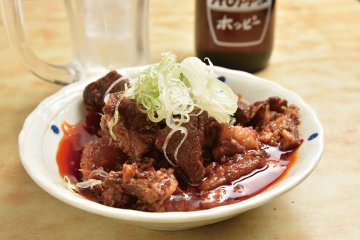
One of the long-established restaurants in the area, it is always packed. But since there are also seats on the second floor, customer turnover is quick. The Spicy Beef Tendon Stew made by stewing high-quality meat from the neighborhood butcher with Korean spices is popular.
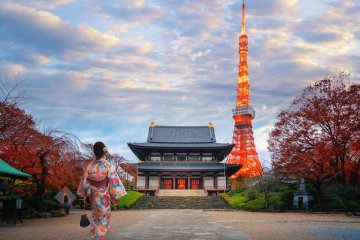
San'en-zan Zōjō-ji is a Jōdo-shū Buddhist temple in Tokyo, Japan. It is the main temple of the Jōdo-shū Chinzei sect of Buddhism in the Kantō region. [Wikipedia]

teamLab Borderless: MORI Building DIGITAL ART MUSEUM (hereinafter "teamLab Borderless") is a permanent art museum at Azabudai Hills. This surreal museum is home to numerous artworks that form one borderless world. The installations move out of rooms, communicate with other works, influence, and sometimes intermingle with each other with no boundaries. The museum utilizes lighting, projections, mirrors, and more to craft its one-of-a-kind viewing experiences. Immerse your body and mind in borderless art in this vast, complex, and three-dimensional world. With its reopening, teamLab Borderless will feature never-seen-before installations. So, be sure to check out its exciting new worlds! Not to be confused with teamLab Planets in Toyosu.
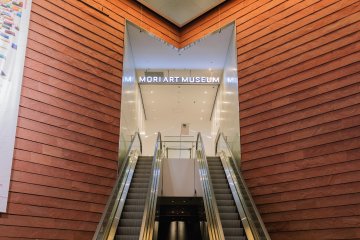
The Mori Art Museum in Roppongi has set itself the goal of being a place of fun, stimulation and discussion - a place where what is important in culture and society is openly discussed. Not only through the exhibitions that are shown there, but also through a wide range of educational programs. It appeals to an audience that ranges from young schoolchildren to college students and seniors, from people who live in regional society to all over the world. The operators of the museum also consider it their task to create a platform for the artists from the region. Since opening, the museum has received high critical acclaim for its wide variety of unique exhibitions, many of which are centered on cosmopolitan themes.